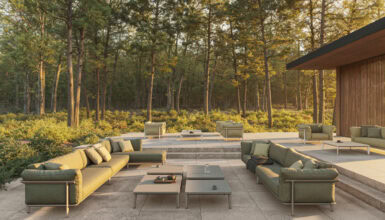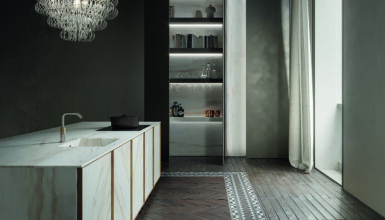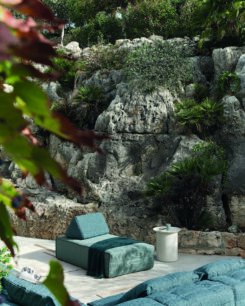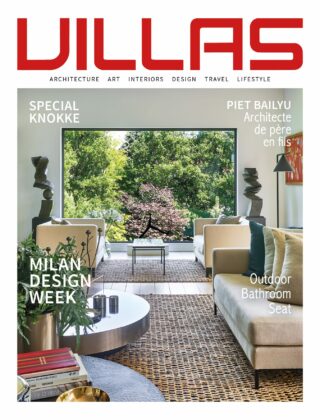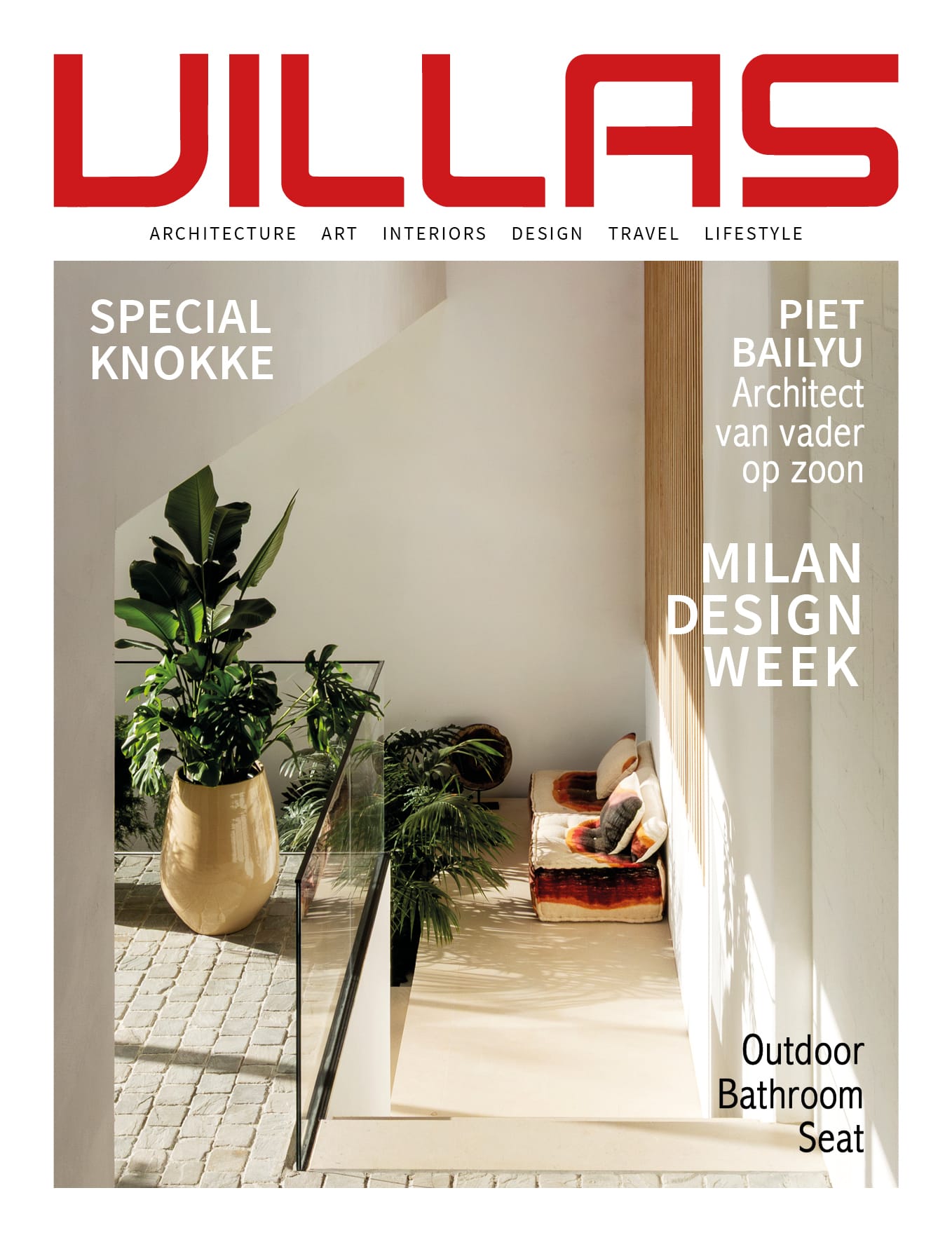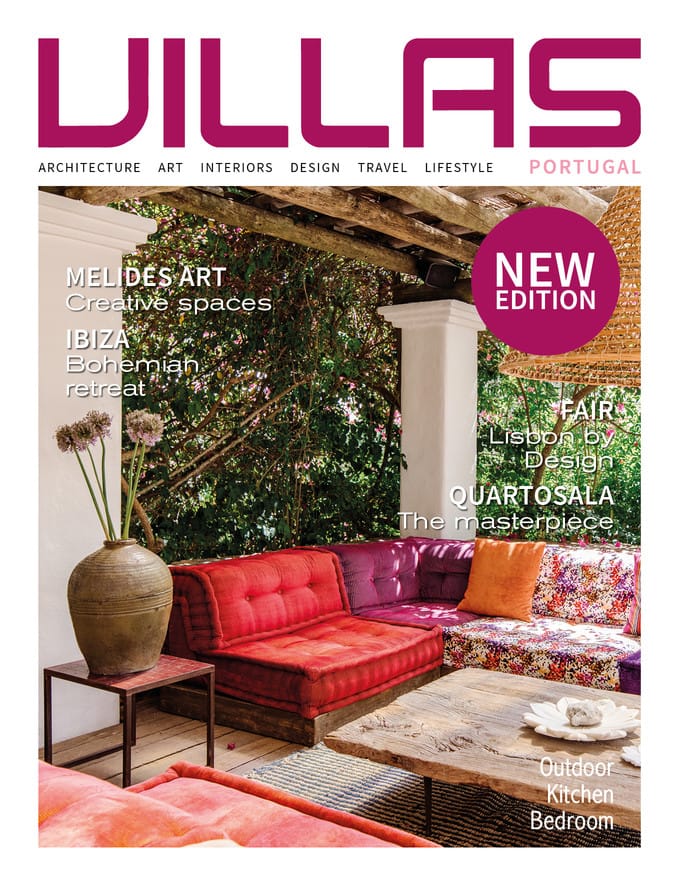Sommaire
An atmosphere that draws on Japanese and Scandinavian philosophy
The Japandi style is a hybrid design that lies somewhere on the border between two cultures. Its origins can be traced back to the Nordic comfort of hygge and the zenitude associated with the land of the rising sun. Just like Scandinavian decoration, Japanese decoration revolves around simplicity and natural elements: two movements that share common points. These two worlds also share the same precept in that they set out to adopt a minimalist lifestyle and to refocus on the essentials. The Japandi interior therefore borrows from the best of both worlds: a perfect and ultimately natural mix.
This design draws on the functionality so sought after in Scandinavian design, without however overlooking the quintessential Japanese elegance, coming together in a sober, serene and sensual atmosphere.
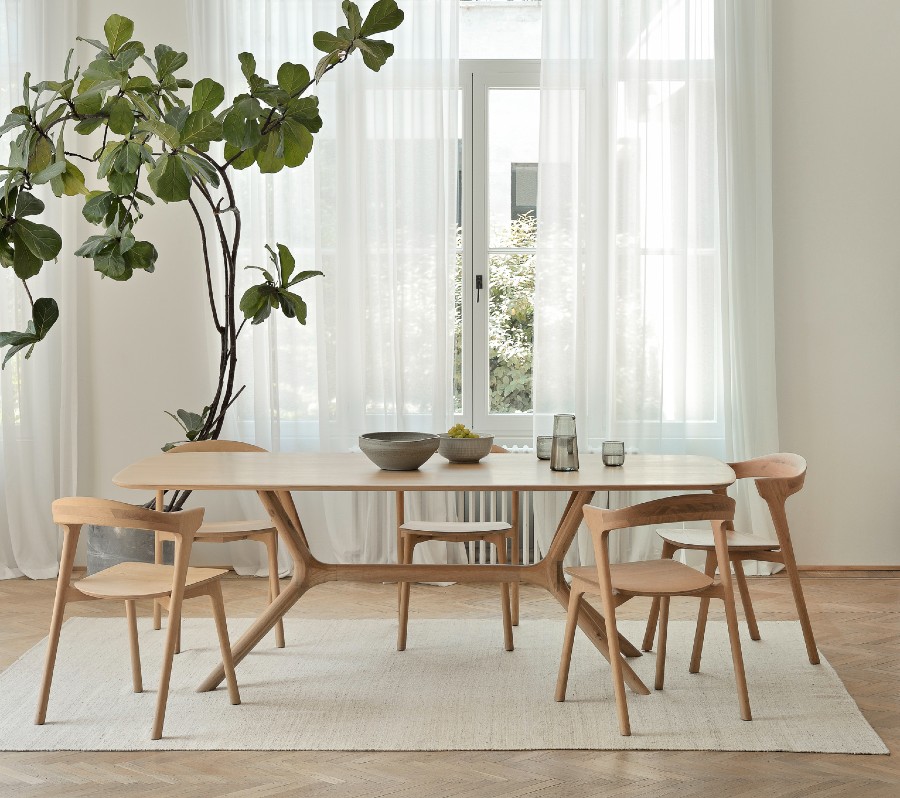
Ethnicraft
Sobriety and functionality: the Danshari concept
Out with the clutter! The Japandi style advocates the Danshari concept and “Less is more”. The idea behind it is to discard the superfluous to calm our minds. The aim is not to get rid of every object, but to keep only the essential: decorative pieces and furniture that inspire calm and serenity, but that are also useful and functional in everyday life. The abandonment of materialism in favour of a simpler life: a Japanese philosophy that avoids the accumulation of objects and memories, that can sometimes have negative vibes. This results in spaces that are more streamlined, more uncluttered, that make you feel at peace in your own home.
The minimalism of Japanese design and the simplicity and functionality of Scandinavian lines come together perfectly to adopt the Danshari concept.
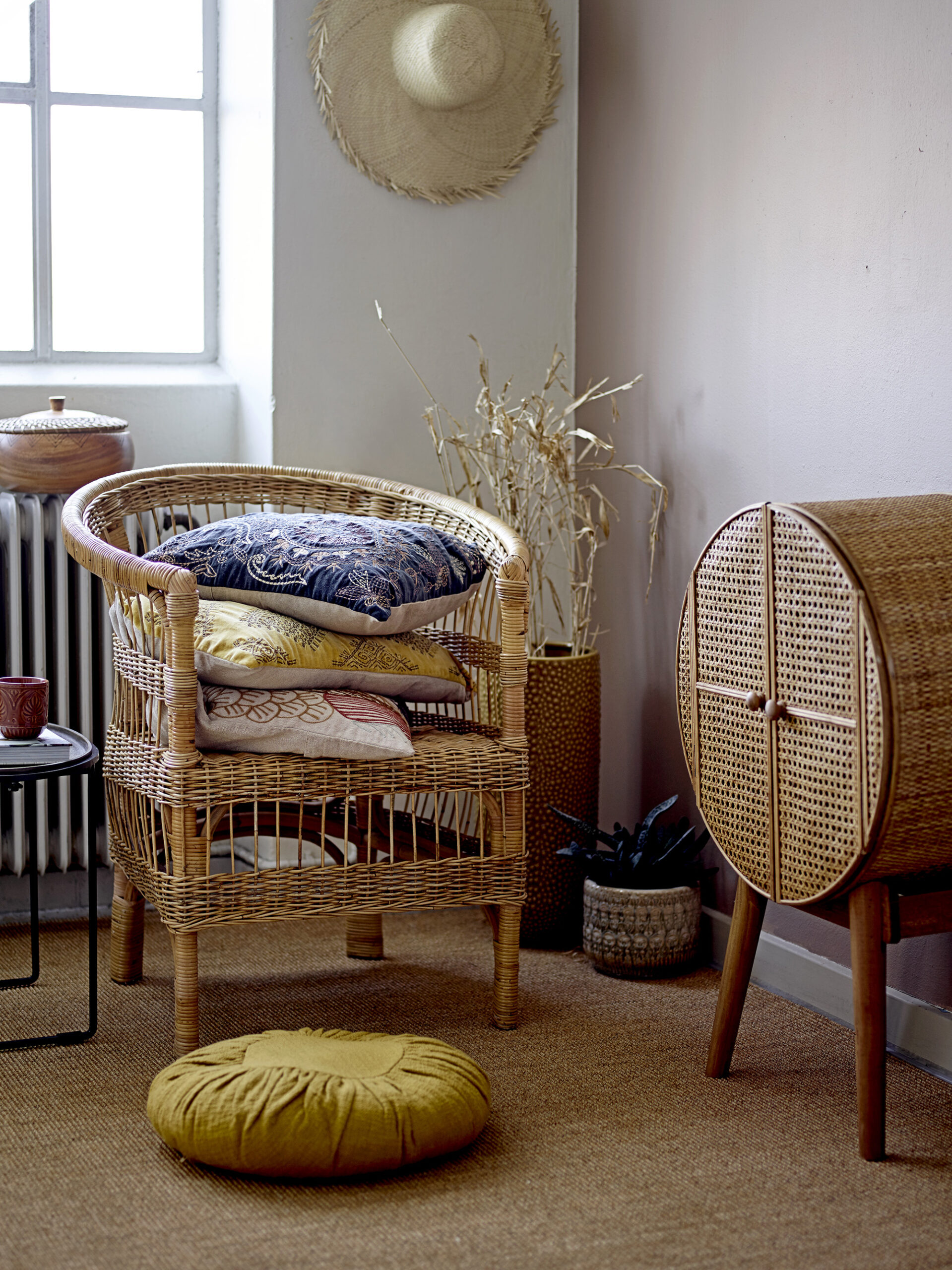
Bloomingville
A palette of colours inspired by nature
A range of calm, soft, peaceful and nature-inspired colours make up the tones typically found in Japandi design. From a Scandinavian point of view, the colours are fairly neutral and tend towards pastel shades such as white, taupe, grey, sage green… The Japanese influence, on the other hand, brings depth with colours that are more muted and colder, revolving around black, midnight blue, bottle green or earthy colours. With such a combination, the interiors are given a striking and refined Nordic-Japanese contrast.
This means that, in the same space, it is not unusual to find a light wall and a dark floor, or vice versa, as well as decorative objects, sometimes neutral or with richer accents.
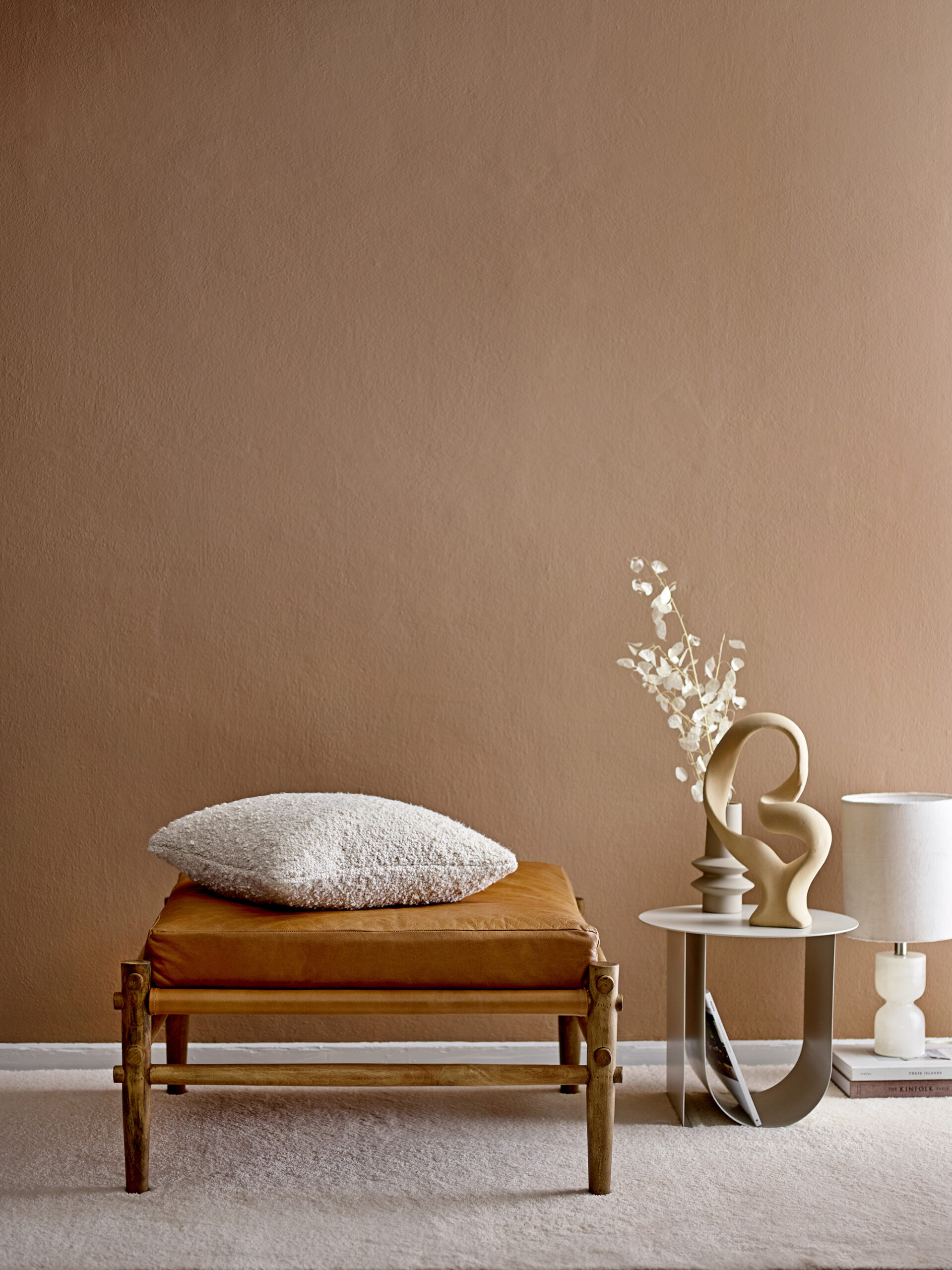
Bloomingville
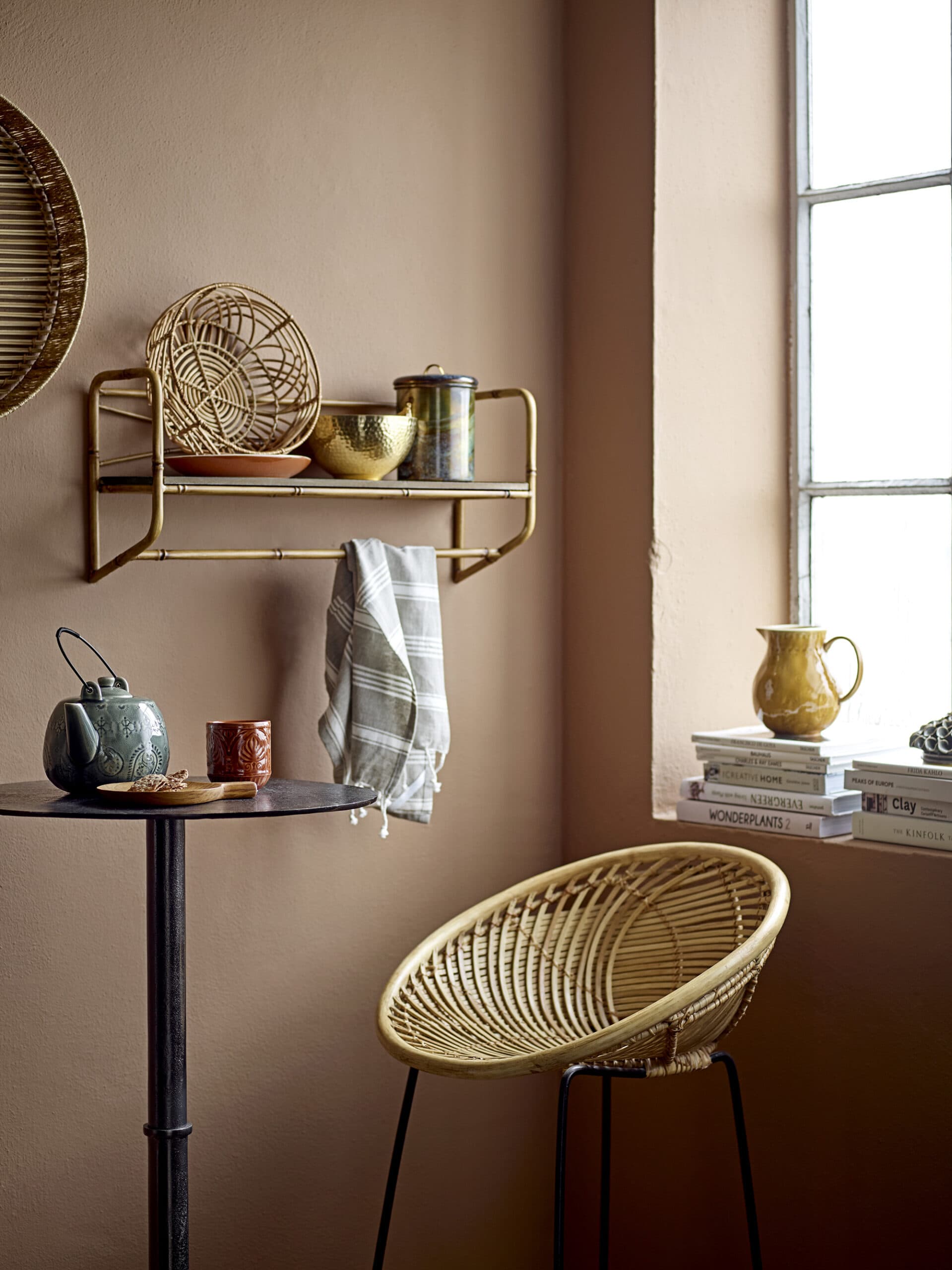
Bloomingville
Japandi design and the play of light and shade
Natural light is essential in a Scandinavian influenced space. Japanese design, on the other hand, tends to favour more intimate atmospheres. The Japandi style therefore plays on the contrasts between light and shadow.
As a result, large windows feature prominently in Japandi interiors to let in the light. Other, more specific spaces, rely on soft, subdued lighting. In order to respect the tenets of this trend, it is important to choose hanging lamps made of natural materials. At Ferm Living, for example, the Dou Lampshade in rattan and the Entire Lampshade in linen will harmonise with the Nordic-Japanese atmosphere, as will lamps made of rice paper or papier-mâché, such as the lamps created by the Japanese-American artist Isamu Noguchi and manufactured by Vitra.
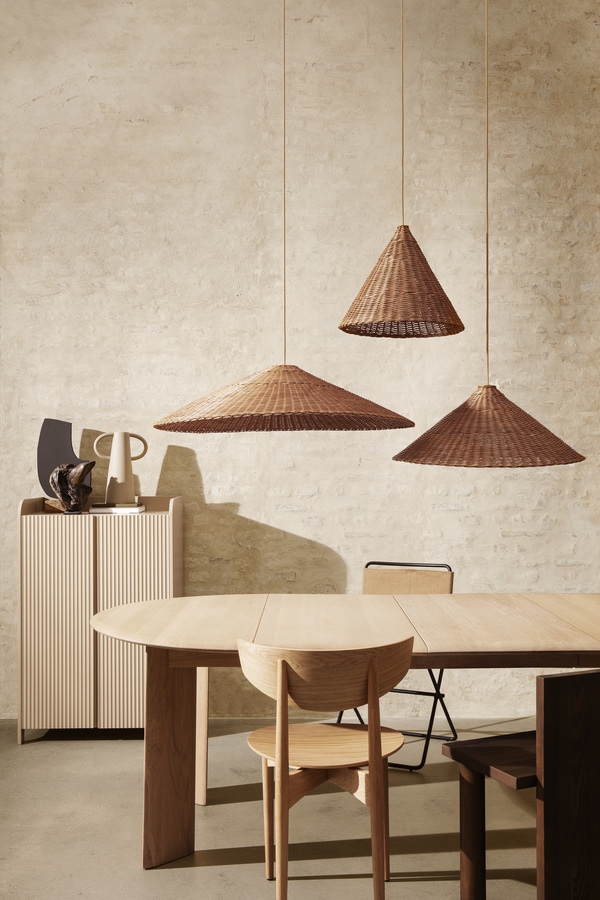
Ferm Living
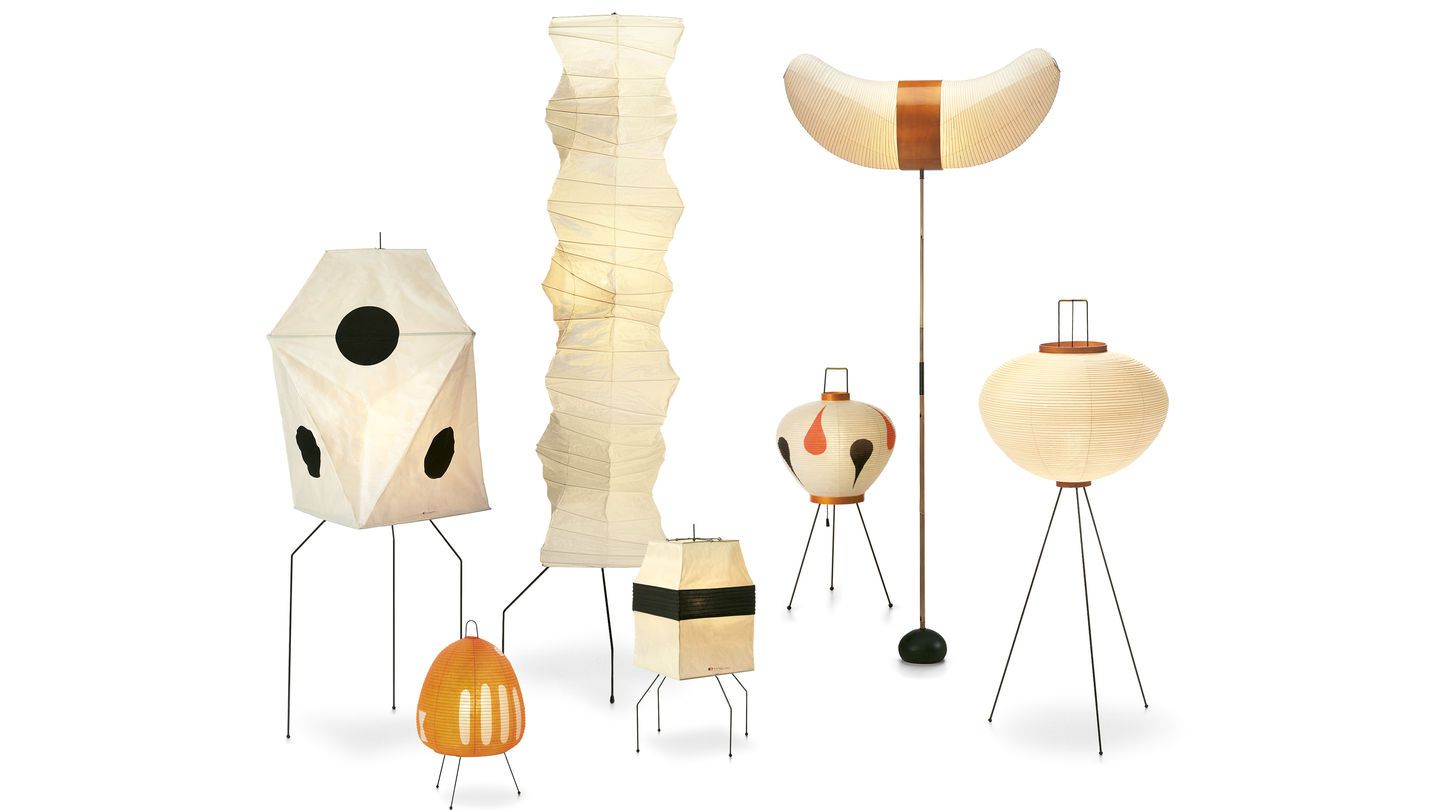
Vitra
Wabi Sabi: the art of imperfection
Wabi Sabi has its roots in the Zen Buddhist religion. This art of living celebrates the beauty in imperfection. Applied to the field of decoration, this concept invites us to admire and appreciate old pieces that seem to have gracefully survived each passing year without losing their beauty. This can be polished stone, raw precious wood or vintage rattan… Wabi Sabi highlights rather than hides the marks of time, associating a range of different natural materials, textures and imperfect forms. The Japanese have a high regard for craftsmanship and a deep respect for nature. This eco-responsible approach, which is more topical than ever, has been adopted by many designers, architects and furniture makers such as Baden Baden in Brussels, with its furniture made of ecological solid wood, or the ceramic tableware of Serax, a Belgian company.
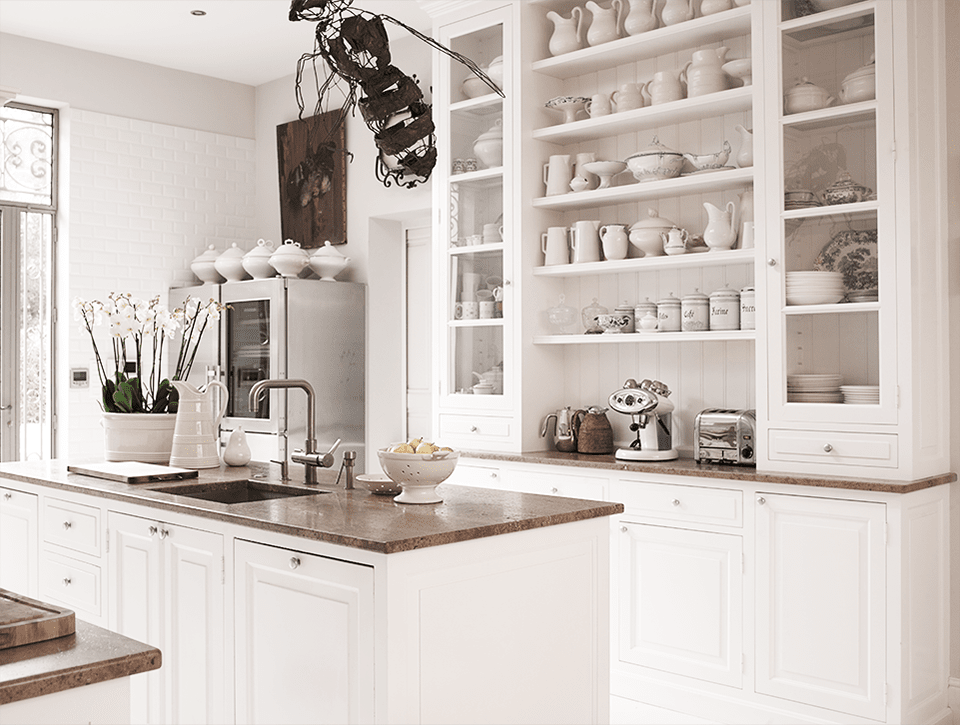
Baden Baden
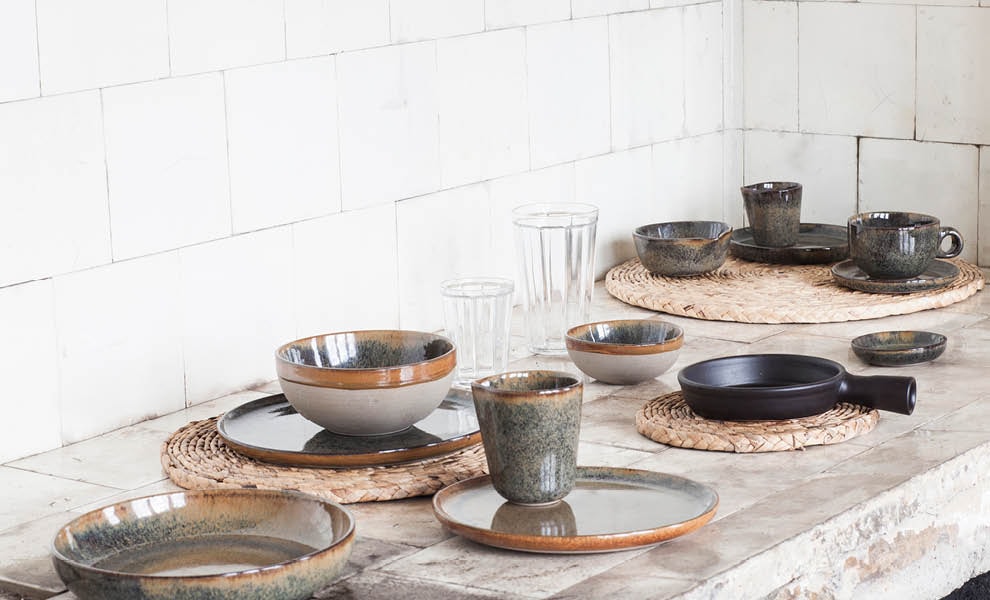
Serax
A pure and minimalist decoration
The Japandi furnishings tend to favour low furniture, characteristic of the Japanese home, recognisable by their minimalist lines and functional design. Oak sideboards featuring screen doors, elongated dining tables with rounded edges for extra elegance, compact sofas and curved stools are all very much in keeping with the Nordic-Japanese style in the living areas.
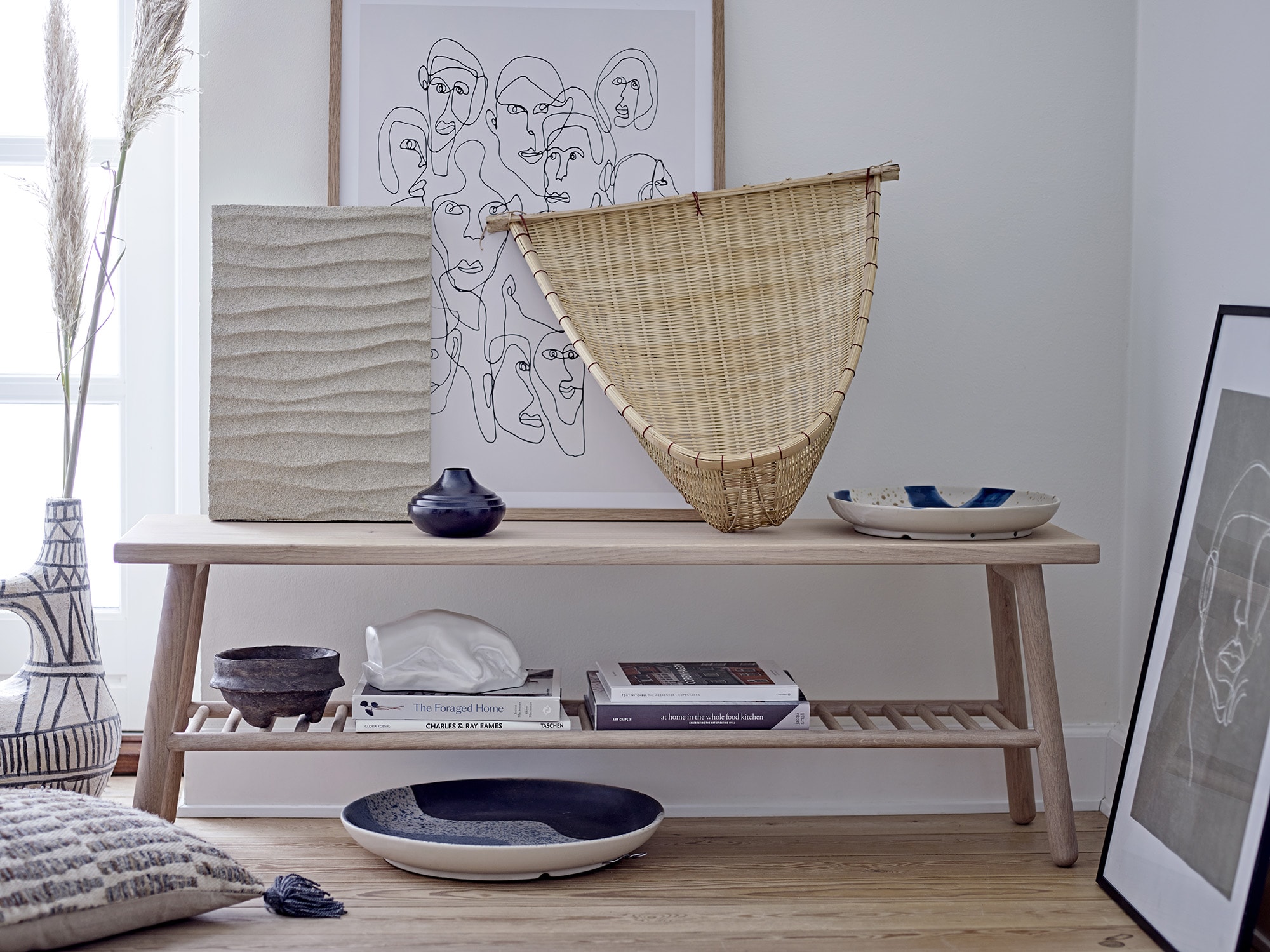
Bloomingville
To add the finishing touch to the decoration, modern candles, vases, teapots, Japanese bowls and other handmade objects are carefully placed in a subtle way without cluttering the space. The must-have? The touch of greenery. A few long grasses, stems and branches, a bamboo or a bonsai tree to enhance the design and remind us of the Japanese flora… And there you have it, a Japandi haven of peace.
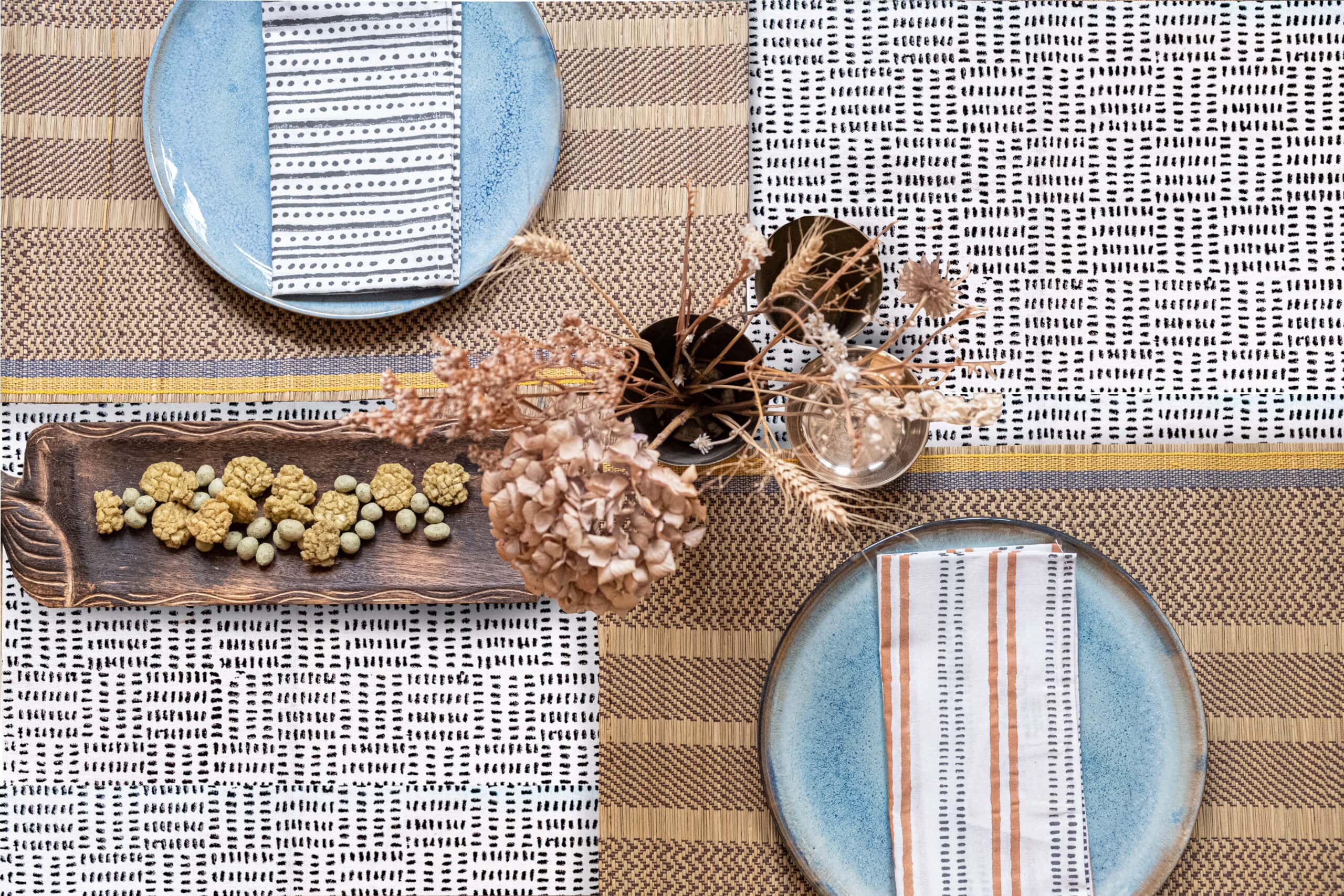
Jamini | Muna Yuuni
